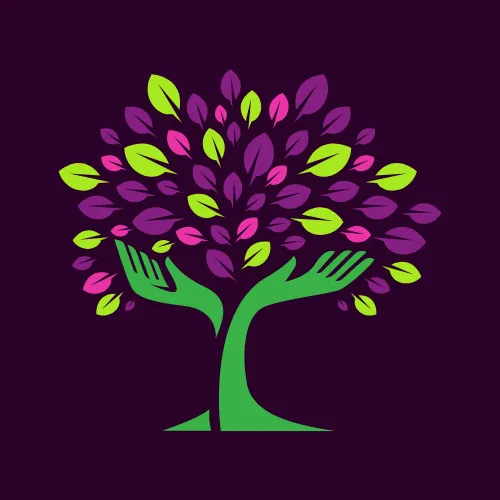Welcome To The Growth Gazette Blog!
This blog is designed especially for young adults seeking to transform past adversities into opportunities for self-improvement, clarity, growth, and personal transformation.
If you are feeling directionless, unseen, hopeless, lost, confused, isolated, alone, or unfulfilled, you've come to the right place.
Through the lens of my personal experiences—traveling to 14 countries, pursuing a career in acting, growing up with a single mother and drug addicted and alcoholic father, and overcoming the loss of a close friend—I understand the importance of facing fears and seeking personal growth. With the guidance of a life coach, I found my way to a more fulfilling, purpose-driven life.
I grew up with ADD and was labeled to have a learning disability. Always struggling with school and barely passing any of my classes. I got arrested multiple times when I was a teenager and got expelled from my school district.
But, I overcame all that. One day while in a drunk tank after being arrested for the 6th time at the age of 16, I said enough is enough.
I began to change the story that I was telling myself, diving deep into non-fiction books, taking courses, getting coached, and changing my belief system and mindset.
Now, I am here to help you do the same. At The Growth Gazette, you'll find:
Life Coaching Insights: Practical tips and strategies to empower you to take control of your life.
Overcoming Challenges: Proven methods to help you face and conquer your fears and obstacles.
Personal Growth Techniques: Tools to cultivate a growth mindset and overcome limiting beliefs and negative thoughts.
Empowering Articles: Stories and advice to inspire and motivate you on your personal development journey.
Join our community and unlock your potential. Embrace the journey of self-discovery and transformation. Let's work together to set clear goals, find your true purpose, and create a positive impact in your life and the world.
Welcome aboard! Let’s grow together.

4 Powerful Ways You'll Abandon The Myth of Toughness and Achieve Remarkable Strength
For decades, we’ve been taught that toughness means powering through, gritting our teeth, and suppressing any sign of weakness. We’ve all heard the phrases: “No pain, no gain,” “Suck it up,” or “Push through.” But what if everything we know about toughness is wrong? In Do Hard Things, Steve Magness dismantles the myth of toughness and replaces it with a framework that actually works—one rooted in science and self-awareness. Magness introduces four powerful ways to abandon this outdated model and achieve real, remarkable strength.
Here’s how you can apply these principles to transform how you approach challenges and overcome adversity.
1. Listen to Your Body: Toughness Is About Awareness, Not Endurance
Traditional toughness tells us to ignore pain and discomfort, but Magness flips this on its head. The first pillar of real strength is learning to listen to your body. Instead of numbing yourself to discomfort, Magness teaches that emotions are signals meant to guide you. They are not dictators, but rather direction markers.
Magness explains that ignoring emotions, stress, or discomfort only leads to burnout. By paying attention to the cues your body gives—whether it’s physical fatigue, emotional stress, or mental exhaustion—you can make better decisions in tough situations. This requires developing a level of self-awareness that allows you to differentiate between when you should push through and when you need to step back and recover.
“True toughness is knowing when to endure discomfort and when to back off,” says Magness.
For years, we’ve been taught that toughness is about never backing down, gritting your teeth, and pushing through discomfort no matter the cost. But Magnus reveals that this one-dimensional view of toughness is both damaging and ineffective.
In fact, Magness conducted a study years ago that he forgot about until four years had past. When he reviewed his research, he found a reoccurring pattern that distinguish whether you could know if someone was to stick with something for a long-haul, or give up quickly. The difference was between athletes who were intrinsically motivated, meaning the reasons for why they were doing what they were doing, and the athletes who were extrinsically motivated.
When the students or athletes were in pursuit of external rewards and validation i.e. trophies, parents approvals and fame, the athletes not only gave up quicker, but they were more likely to not develop real toughness.
Steve Magness says that really toughness is built through experiencing discomfort through stress, leaning in and paying attention, creating space to maintain thoughtful action. He shares that listening to your body is one of the most important things that you can do.
The takeaway: Toughness isn’t about shutting down your emotions—it’s about understanding them. Learn to interpret the discomfort you feel and respond with intentionality. This shift allows you to stay aligned with your values and long-term goals rather than being driven by a false sense of toughness.
2. Respond, Don’t React: Flexibility Is Key to Resilience
The second pillar focuses on how you handle stress in real-time. When confronted with a challenge, our natural instinct might be to react impulsively—letting emotions drive our actions. Whether it’s anger, frustration, or anxiety, reacting without thinking often worsens the situation. Instead, Magness advocates for creating space between stimulus and response.
Real toughness is about controlling the space between what happens to you and how you respond. This is what differentiates high performers from those who crumble under pressure. Instead of reacting based on impulse, Magness teaches the importance of taking a moment to pause, assess, and choose a deliberate course of action. This strategy helps you avoid rash decisions and ensures that your response aligns with your values and desired outcome.
“If you can create space, you can choose how to respond instead of being a slave to your reactions.” - Steve Magness
Magness highlights how this principle applies in all areas of life—from sports performance to business and personal relationships. Responding thoughtfully in high-pressure situations builds long-term resilience.
The takeaway: Real strength is in your ability to pause, assess the situation, and make an intentional decision. Build mental flexibility by practicing mindfulness and learning to create that crucial space between stimulus and response.
3. Ditch the Façade, Embrace Reality: Toughness Is Vulnerability
The third pillar of Magness’s framework shatters the long-held myth that toughness means suppressing weaknesses. For years, toughness has been associated with hiding your struggles and pretending to be invincible. But Magness argues that this façade only weakens us in the long run. Real toughness, he suggests, is about embracing reality.
When you acknowledge your fears, insecurities, and struggles, you begin to grow from them. By confronting discomfort rather than running from it, you can build a deeper sense of resilience. Magness points out that those who pretend to be tough often end up breaking down because they haven’t addressed their inner battles.
Steve Magness talks about the idea that we should all accept what we are capable of. Meaning that we shouldn't be pushing ourselves too far where we break down or burn out, as well as setting our sights and goals so short that we don't stretch ourselves and grow. He talks about how goals should be only "a little out of reach."
If we aren't honest with ourselves and look at the hard facts, whether that's about how much effort we can put into something, where our skills are currently at, or if it's even attainable, then well either burnout, fail, or give up.
“Toughness isn’t about pretending you're invincible. It’s about confronting reality head-on.” - Steve Magness
Accepting reality and dealing with it authentically makes you stronger. Whether it's a challenging work project, a tough personal situation, or a mental block, the ability to be vulnerable and real about your struggles opens the door to real growth.
The takeaway: Don’t hide behind a façade of toughness. Embrace vulnerability, face your struggles, and use them as fuel for growth. Authenticity is a key driver of resilience.
4. Transcend Discomfort: Discomfort Is the Path to Growth
The final pillar addresses the unavoidable reality of discomfort. Whether it’s physical pain, emotional distress, or mental strain, discomfort is an inevitable part of life. But rather than avoiding it or pretending it doesn't exist, Magness urges us to transcend it.
In Do Hard Things, Magness explains that growth only happens when we step outside our comfort zone. However, transcending discomfort isn’t about gritting your teeth and ignoring it. Instead, it’s about accepting that discomfort is part of the process and using it as an opportunity for growth. The key is to learn how to work through discomfort in a way that strengthens you rather than breaks you down.
He also talks about the framework created by psychotherapist and holocaust survivor Viktor Frankl. Where Frankl talks about how suffering is essential for growth, and finding meaning in that suffering will get us through any difficult time.
“Discomfort is not the enemy; it’s the catalyst for growth.” - Steve Magness
Whether it’s the physical discomfort of pushing through a tough workout, the emotional discomfort of a difficult conversation, or the mental discomfort of tackling a big project, these moments of discomfort are where growth happens. Magness emphasizes that true toughness isn’t avoiding discomfort—it’s learning to work through it in a constructive way.
The takeaway: Discomfort is a natural part of the growth process. By facing it head-on and working through it, you build the strength to take on even bigger challenges.
Achieving Remarkable Strength Through Real Toughness
Steve Magness redefines what it means to be tough in Do Hard Things. By abandoning the outdated myths of toughness—gritting through pain, hiding weaknesses, and reacting impulsively—you can achieve remarkable strength through awareness, intentional response, vulnerability, and growth. The four pillars he presents offer a more sustainable, science-backed way to build resilience and thrive in challenging situations.
Magness shows us through research, real-life experience, and history how to actually build real resilience and be able to show up as your best in life. I personally loved this book, and through my own research and life experiences, I can confidently agree that almost everything he says in his book on how to build real toughness and resilience, is true.
If you're ready to let go of the old model of toughness and embrace a more authentic, effective approach to overcoming adversity, Do Hard Things is your roadmap. Start by listening to your body, responding thoughtfully, embracing reality, and leaning into discomfort—this is where real strength begins.
P.S.
If you found value in this book review, or any other of my articles, then join my newsletter The Growth Navigator to get tips, insights, and resources straight to your inbox so you don't have to do the finding! You'll get updates and alerts for new articles or resources!
Before You Go, Check Out My Newsletter!
Stay Up To Date With Actionable Tips & Advice!

